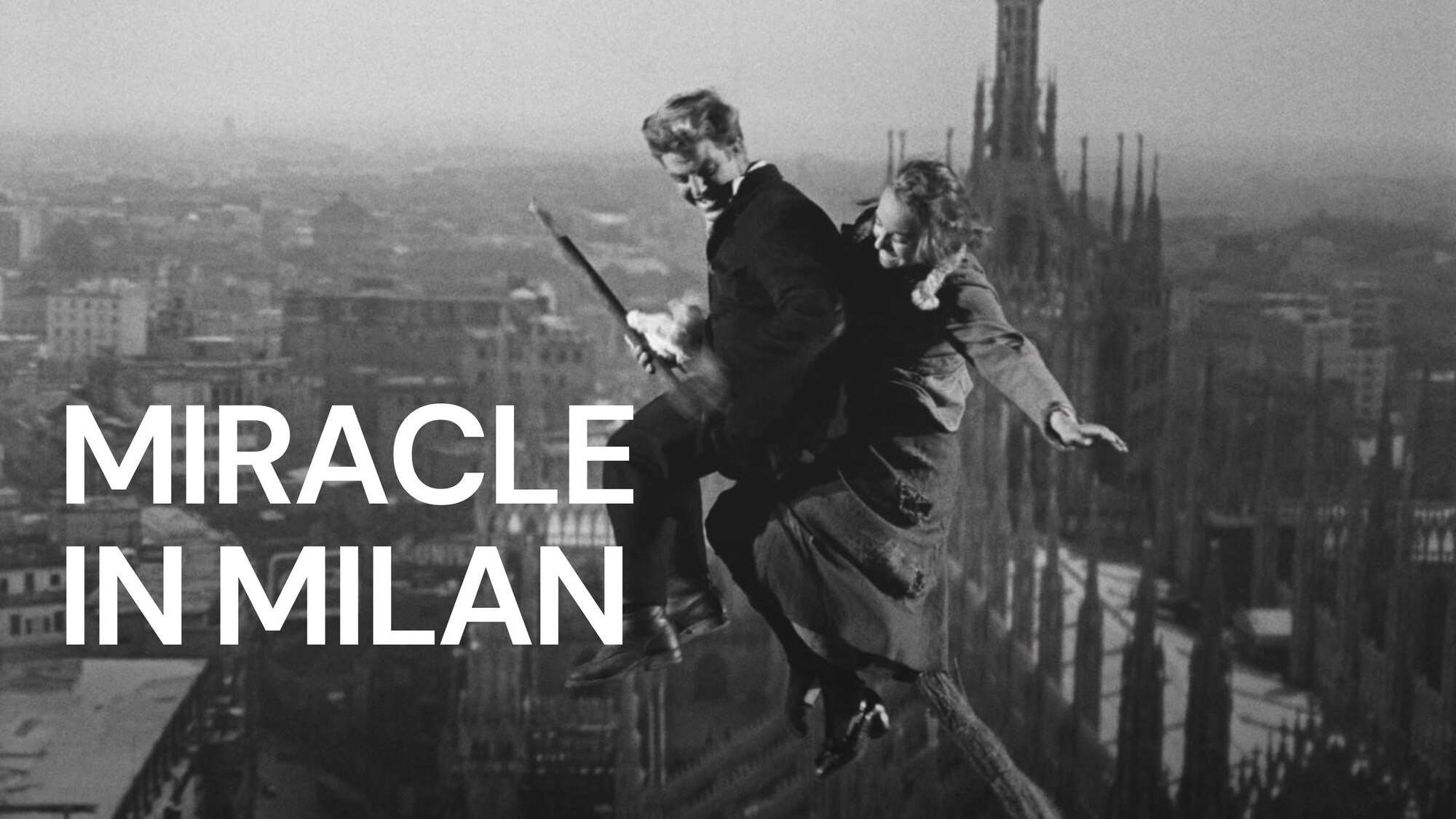
Miracle in Milan is a classic Italian film that has captivated audiences around the world since its release in 1951. Directed by Vittorio De Sica, this heartwarming and enchanting movie tells the tale of a young orphan named Totò, who discovers a magic dove that grants him extraordinary powers. Set in the backdrop of post-World War II Milan, the film explores themes of poverty, social inequality, and the power of hope.
With its unique blend of fairy tale elements and social commentary, Miracle in Milan has earned its reputation as a cinematic masterpiece. In this article, we will delve into 33 fascinating facts about this beloved film, from its casting choices to its production challenges and its enduring legacy. So sit back, grab some popcorn, and get ready to discover the magic behind Miracle in Milan!
Key Takeaways:
- “Miracle in Milan” is a classic Italian film that tells the story of hope, friendship, and the power of imagination in the face of poverty and social injustice.
- The movie’s blend of fantasy and realism, captivating storyline, and timeless messages make it a must-watch for anyone who loves heartwarming and thought-provoking cinema.
Miracle in Milan was directed by Vittorio De Sica.
Miracle in Milan, a critically acclaimed Italian film, was directed by the legendary Vittorio De Sica.
It was released in 1951.
The movie Miracle in Milan was released in 1951, captivating audiences with its engaging storyline and unique charm.
It is considered one of the greatest neorealist films.
Miracle in Milan is often hailed as one of the greatest examples of neorealism in cinema, showcasing the struggles of everyday people amidst a harsh reality.
The film won the Grand Prize at the Cannes Film Festival.
Due to its exceptional storytelling and social commentary, Miracle in Milan received the prestigious Grand Prize at the Cannes Film Festival in 1951.
The screenplay was written by Cesare Zavattini.
Cesare Zavattini, a prominent Italian screenwriter, crafted the screenplay for Miracle in Milan, further contributing to its success.
It tells the story of a group of outcasts living in a shantytown.
Miracle in Milan follows the lives of a group of outcasts residing in a shantytown, struggling to make ends meet in a world that seems to have forgotten them.
The main character is a young orphan named Totò.
Totò, a lovable and optimistic young orphan, serves as the film’s main character, guiding viewers through the magical world of Miracle in Milan.
The movie portrays themes of poverty and social injustice.
Through its compelling narrative, Miracle in Milan sheds light on the harsh realities of poverty and social injustice, prompting viewers to reflect on the inequalities prevalent in society.
The film incorporates elements of fantasy and magical realism.
Miracle in Milan intertwines elements of fantasy and magical realism, offering a whimsical and enchanting experience for the audience.
It emphasizes the power of hope and imagination.
At its core, Miracle in Milan highlights the importance of hope and imagination in overcoming adversity, inspiring viewers to never lose sight of their dreams.
The movie features stunning cinematography.
The cinematography in Miracle in Milan is visually captivating, effectively capturing the raw emotions and picturesque scenes throughout the film.
The iconic Umberto D. was released the same year as Miracle in Milan.
1951 was a significant year for Italian neorealist cinema, as Miracle in Milan’s release coincided with another classic film, Umberto D., both directed by Vittorio De Sica.
The film was initially met with mixed reviews.
Upon its release, Miracle in Milan received a mixed reception, with some critics praising its innovative storytelling while others questioned its departure from traditional neorealism.
The movie showcases the contrast between the rich and the poor.
Miracle in Milan vividly portrays the stark contrast between the lives of the wealthy and the destitute, highlighting the stark disparities that exist within society.
It sparked debates about the blending of fantasy and realism.
The incorporation of fantasy elements in Miracle in Milan ignited discussions among film enthusiasts and critics, raising questions about the boundaries between fantasy and realism in cinema.
The film’s score was composed by Alessandro Cicognini.
Alessandro Cicognini’s musical score for Miracle in Milan perfectly complements the film’s themes, adding depth and emotion to each scene.
It received an Academy Award nomination for Best Original Screenplay.
Miracle in Milan achieved critical acclaim overseas, earning an Academy Award nomination for Best Original Screenplay, solidifying its position as a cinematic masterpiece.
The movie offers a poignant critique of capitalism.
Miracle in Milan serves as a thought-provoking critique of capitalism, shedding light on its impact on marginalized communities and the ethical dilemmas it presents.
The film’s magical elements are a metaphor for escapism.
The magical elements in Miracle in Milan serve as a metaphor for escapism, allowing the characters to transcend their harsh realities and find solace in their imagination.
The movie’s message resonates with audiences even today.
Despite being released decades ago, Miracle in Milan’s message of resilience and the power of community still resonates with audiences around the world.
It showcases the importance of friendship and solidarity.
Miracle in Milan emphasizes the significance of friendship and solidarity, highlighting how these bonds can provide strength and support in the face of adversity.
The film merges comedy and drama seamlessly.
One of the remarkable aspects of Miracle in Milan is its ability to seamlessly blend comedy and drama, creating a nuanced and emotionally engaging viewing experience.
The movie received praise for its authentic performances.
The performances in Miracle in Milan were lauded for their authenticity, with the actors bringing depth and humanity to their respective characters.
It explores the concept of home and belonging.
Miracle in Milan delves into the universal theme of finding a place to call home and the sense of belonging that comes with it, resonating with audiences on a personal level.
The film’s symbolism adds depth to its storytelling.
Symbolism is interwoven throughout Miracle in Milan, enhancing its narrative and inviting viewers to engage in a deeper exploration of the film’s themes.
The movie received multiple international awards.
Miracle in Milan went on to receive numerous international accolades, solidifying its status as an important piece of cinematic history.
It serves as an allegory for the human condition.
Miracle in Milan can be interpreted as an allegory for the human condition, offering insights into the resilience and strength of the human spirit.
The film’s title holds significant meaning.
The title of Miracle in Milan holds significant meaning, representing the transformative power of hope and the possibility of finding miracles even in the most unexpected places.
It delves into themes of social inequality.
Through its narrative, Miracle in Milan explores the pervasive issue of social inequality, serving as a poignant reminder of the challenges faced by marginalized communities.
The movie’s captivating storyline keeps viewers engaged from start to finish.
Miracle in Milan’s captivating and thought-provoking storyline ensures that viewers remain engrossed throughout the film, eagerly following Totò’s journey.
It has been praised for its imaginative and poetic storytelling.
Miracle in Milan has received acclaim for its imaginative and poetic storytelling, which transports viewers into a world where dreams and reality seamlessly blend.
The film showcases the power of collective action.
Miracle in Milan highlights the transformative power of collective action, demonstrating the strength that can be found in unity and solidarity.
It remains a timeless classic in the world of cinema.
Decades after its release, Miracle in Milan continues to be recognized as a timeless classic due to its exceptional storytelling, social commentary, and enduring messages.
Conclusion
Miracle in Milan is a truly captivating movie that deserves recognition for its unique storytelling and powerful messages. From its enchanting visuals to its thought-provoking narrative, this film effortlessly pulls viewers into its fantastical world while also addressing important social issues. The masterful direction of Vittorio De Sica, coupled with the brilliant performances of the cast, adds depth and emotion to this timeless masterpiece.Whether you’re a fan of Italian cinema or simply looking for a movie that will leave a lasting impact, Miracle in Milan is a must-watch. Its blend of fantasy and reality, combined with its exploration of poverty, greed, and the power of hope, make it a profound viewing experience. So, grab some popcorn and immerse yourself in the magical world of Miracle in Milan – you won’t be disappointed.
FAQs
Q: What is the plot of Miracle in Milan?
A: Miracle in Milan follows the story of Toto, a homeless orphan who discovers a magical dove that grants him the ability to make wishes come true. As Toto navigates the harsh realities of post-war Milan, he uses his newfound powers to bring joy and happiness to those around him.
Q: Who directed Miracle in Milan?
A: Miracle in Milan was directed by the acclaimed Italian filmmaker Vittorio De Sica. De Sica is known for his neorealist approach to filmmaking and has made significant contributions to the Italian film industry.
Q: Is Miracle in Milan based on a book?
A: No, Miracle in Milan is not based on a book. It is an original screenplay written by Cesare Zavattini, who collaborated extensively with Vittorio De Sica on several of his neorealist films.
Q: When was Miracle in Milan released?
A: Miracle in Milan was released in 1951. It was met with critical acclaim and went on to win the Grand Prize at the Cannes Film Festival.
Q: Can you watch Miracle in Milan with subtitles?
A: Yes, Miracle in Milan has been released with English subtitles, allowing viewers who do not speak Italian to enjoy the film and understand the dialogue.
Was this page helpful?
Our commitment to delivering trustworthy and engaging content is at the heart of what we do. Each fact on our site is contributed by real users like you, bringing a wealth of diverse insights and information. To ensure the highest standards of accuracy and reliability, our dedicated editors meticulously review each submission. This process guarantees that the facts we share are not only fascinating but also credible. Trust in our commitment to quality and authenticity as you explore and learn with us.


